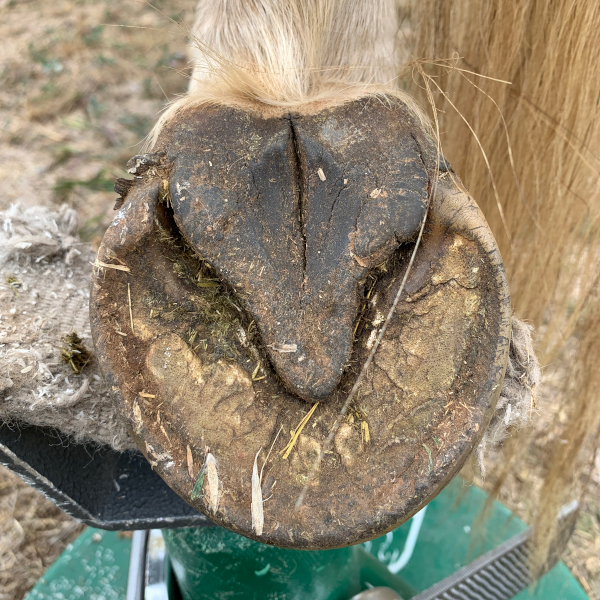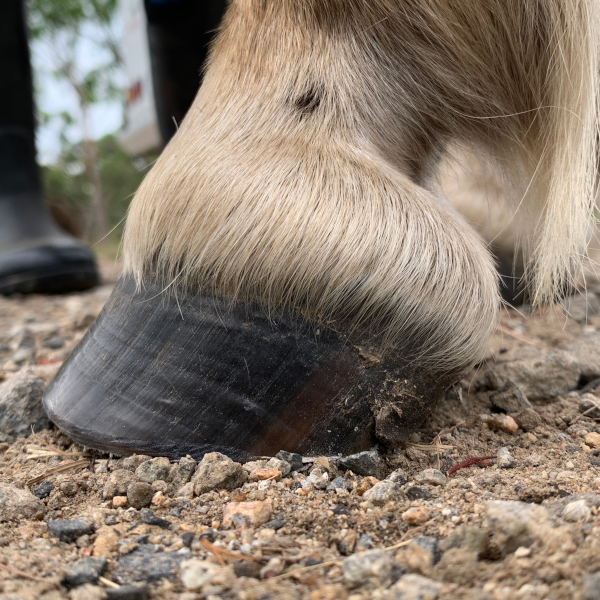How often should my horse see the farrier?
All domestic horses need good, regular hoof care. Hooves that are allowed to grow long are not just
unsightly – the internal workings of the hoof, the tendons and ligaments of the legs and ultimately
the movement of the horse are all affected by having unbalanced hoofs. If you are not convinced of
how important good regular hoof care is then imagine trying to walk in clown shoes that also have
high heels! Imagine trying to run in them! Imagine having to wear those shoes for days, weeks or
months and how this would affect other parts of your body!
Irrespective of whether a domestic horse is shod or unshod (barefoot) they all need good regular hoof
care. A domestic horse is unable to wear their hooves down as nature intended. Wild horses maintain
their own hooves by moving many kilometres a day across a variety of surfaces. This keeps their
hooves in good condition as the movement across abrasive surfaces wears (‘trims’) the hooves on a
continual basis. Unshod domestic horses rarely move enough to wear down their hooves correctly and
the hooves of shod horses do not wear at all as horseshoes prevent any wear from occurring.
Unshod horses need regular trimming. Soft surfaces such as pasture and stable bedding do not
wear the hoof down at all therefore the hooves need to be trimmed about every three to four weeks
(six weeks maximum). Horses that are wearing their feet down on more abrasive surfaces may need less
frequent trimmings however even with these horses regular light trimming is necessary to maintain
the correct shape of the hoof.
There are now courses available for horse owners where you can learn how to maintain and trim your
own horse’s hooves. Theses courses teach you all about hooves, not just how to trim them and are a
great way of learning about this very important part of your horse. Once proficient at trimming you
can maintain the hooves of your horse by carrying out regular trims and arranging to have a
professional ‘trimmer’ visit less frequently to give your horse a thorough trim, check your work and
make sure you are on the right track.
Shod horses need to be re-shod every four to six weeks irrespective of whether they have worn
the shoes out or not. The hooves grow continuously and when shod the hoof cannot wear down as it can
(in the correct conditions) with an unshod horse. So make sure you have a regular appointment with
your farrier so that your horse does not go too long between shoeing.
If a horse is only working intermittently they do not need to be kept continuously shod. Many horses
are fine with front shoes only and many do not need shoes at all. Even horses in hard work can be
unshod. There have been great advances in hoofboots in the last few years and many horse owners
prefer to use them rather than keep a horse continuously shod. The hoofboots are put on the horse
for work and the hooves are left ‘bare’ for the rest of the time.
You will need to do some research if you want to change your horse from shod to ‘barefoot’. Horse
owners who change to ‘barefoot’ usually start to become more involved with the hoofcare of their
horse (where before they may have just had the farrier visit and left it up to them) but this is a
good thing as horse owner’s end up learning a lot more in the process. Remember – you can never have
too much knowledge!
RSPCA




